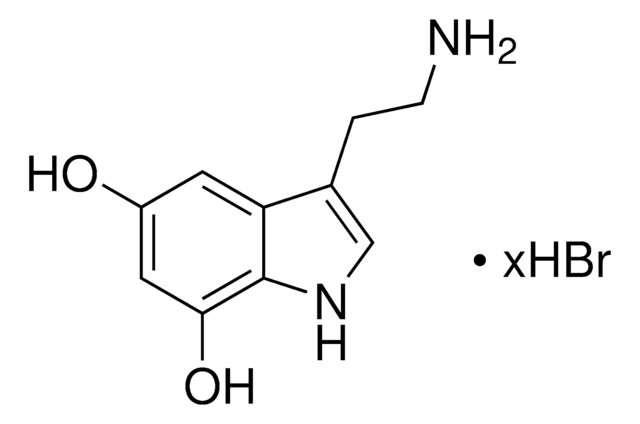M8750
(+)-Methamphetamine hydrochloride
Sinônimo(s):
d-Desoxyephedrine hydrochloride, d-N,α-Dimethylphenethylamine hydrochloride, Methylamphetamine hydrochloride
About This Item
Produtos recomendados
controle de medicamentos
USDEA Schedule II; Home Office Schedule 2; stupéfiant (France); kontrollierte Droge in Deutschland; regulated under CDSA - not available from Sigma-Aldrich Canada; psicótropo (Spain); Decreto Lei 15/93: Tabela IIB (Portugal)
técnica(s)
HPLC: suitable
gas chromatography (GC): suitable
solubilidade
H2O: soluble
ethanol: soluble
aplicação(ões)
forensics and toxicology
pharmaceutical (small molecule)
veterinary
originador
Teva
cadeia de caracteres SMILES
Cl[H].CN[C@@H](C)Cc1ccccc1
InChI
1S/C10H15N.ClH/c1-9(11-2)8-10-6-4-3-5-7-10;/h3-7,9,11H,8H2,1-2H3;1H/t9-;/m0./s1
chave InChI
TWXDDNPPQUTEOV-FVGYRXGTSA-N
Informações sobre genes
human ... SLC6A2(6530) , SLC6A3(6531) , SLC6A4(6532)
Procurando produtos similares? Visita Guia de comparação de produtos
Ações bioquímicas/fisiológicas
Características e benefícios
Palavra indicadora
Danger
Frases de perigo
Declarações de precaução
Classificações de perigo
Acute Tox. 2 Oral - STOT SE 3
Órgãos-alvo
Central nervous system
Código de classe de armazenamento
6.1A - Combustible acute toxic Cat. 1 and 2 / very toxic hazardous materials
Classe de risco de água (WGK)
WGK 3
Ponto de fulgor (°F)
Not applicable
Ponto de fulgor (°C)
Not applicable
Equipamento de proteção individual
Eyeshields, Faceshields, Gloves, type P2 (EN 143) respirator cartridges
Escolha uma das versões mais recentes:
Já possui este produto?
Encontre a documentação dos produtos que você adquiriu recentemente na biblioteca de documentos.
Active Filters
Nossa equipe de cientistas tem experiência em todas as áreas de pesquisa, incluindo Life Sciences, ciência de materiais, síntese química, cromatografia, química analítica e muitas outras.
Entre em contato com a assistência técnica









